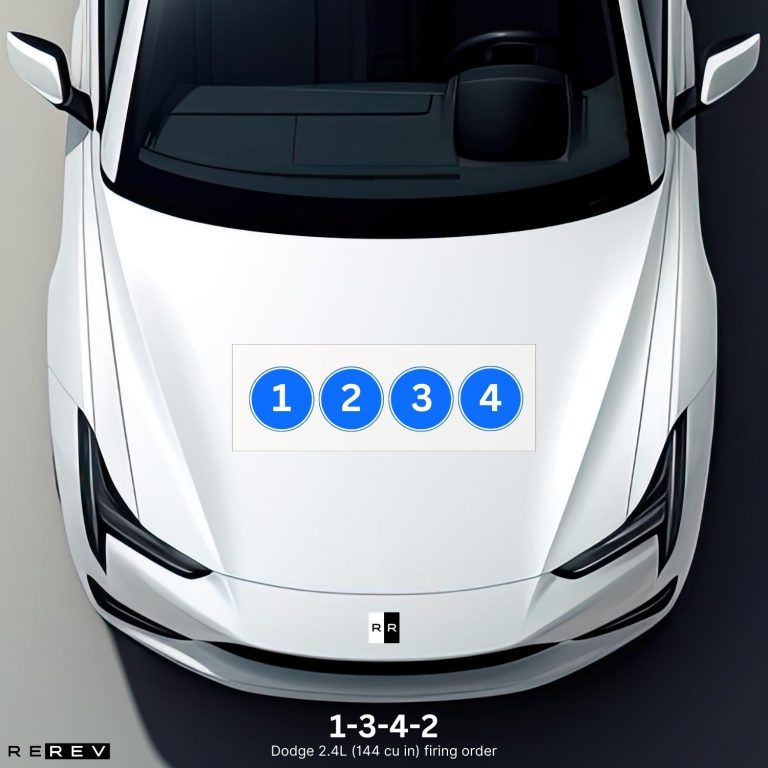Dodge 2.4L (144 cu in) firing order — diagram & guide
The Dodge 2.4L firing order is a testament to engineering excellence.

Dodge is known for its powerful and robust V8s, but for some base models, there were some four-cylinder engines that were often used in a variety of different vehicles. If you have a vehicle with this engine, knowing the Dodge 2.4L (144 cu in) firing order is crucial to keep it running smoothly.
So, this guide will go through it all and explain a bit more about why the firing order is important in the first place along with a few other things.
Dodge 2.4L firing order
Since this is a four-cylinder engine, the firing order is pretty simple and easy to remember. So, the Dodge 2.4L firing order is 1-3-4-2, and this is the common firing pattern for all of the brand’s four-cylinder engines.
However, there’s also the high-output version of this engine and it’s a 2.4-liter Turbo used in SRT-4 models like the Caliber and Neon. So, we have to also give you an update on that one just in case.
Dodge 2.4L Turbo firing order
We’ve heard some driver feedback discussing how the 2.4L Turbo engine is different than the standard version. While that’s true because of all the performance updates, the Dodge 2.4L Turbo firing order is still 1-3-4-2.
The base engine block is the same as with the naturally aspirated 2.4-liter engine, and that adds up to the same firing pattern. However, the engine placement in the engine bay is a bit specific since it’s transverse for these engines, so we have to cover that too.
Dodge 2.4L cylinder diagram

Unlike longitudinal engine placement, the Dodge 2.4L engine is usually placed in a transverse direction. This means that the engine cylinders aren’t going from 1 to 4 from the front of the engine towards the back, but rather from the left side to the right side.
The first cylinder is the one to the left, so the cylinder arrangement goes from 1 to 4 in a straight line. This also makes it much easier to work on the engine, while the SRT4 version is also the same only with a turbocharger kit mounted.
Dodge 2.4L vehicle applications
To make sure that you are using the right firing pattern, we’ll go through all the vehicle models that have both the 2.4-liter and 2.4-turbo engines. Let’s focus first on the high-performance turbo version:
- Dodge Caliber SRT-4
- Dodge Neon SRT-4
- Dodge Stratus R/T
- Chrysler PT Cruiser GT
For the naturally aspirated version of the engine, these are the vehicles that came with it from the production lines:
- Dodge Stratus
- Dodge Caravan
- Dodge Grand Caravan
- Chrysler Cirrus
- Jeep Wrangler
- Jeep Liberty
- Plymouth Voyager
As you can see, these engines were pretty popular back in the day, so they were used in quite a few Chrysler and Dodge vehicles.
Our take
So, there you have it – we’ve gone through both the N/A and turbo versions of the 2.4-liter Dodge engine and things seem pretty clear when it comes to the firing order.
Make sure to also consider the transverse engine application which is crucial for proper cylinder numbering and this helps a ton when you are inspecting the cylinders one by one.